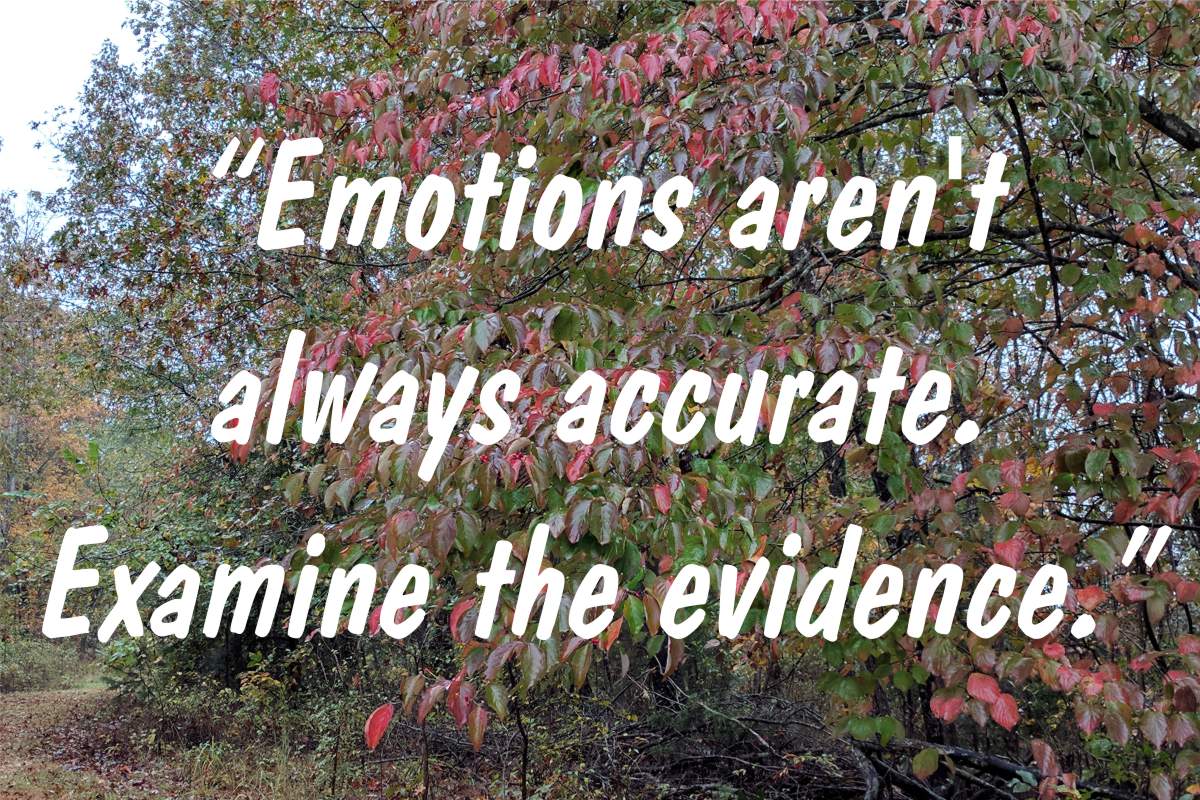










Popular Articles
Crazy-Makers: Dealing with Passive-Aggressive People
Why Are People Mean? Don't Take It Personally!
Struggling to Forgive: An Inability to Grieve
The Secret of Happiness: Let It Find You (But Make the Effort)
20 Steps to Better Self-Esteem
7 Rules and 8 Methods for Responding to Passive-aggressive People
What to Do When Your Jealousy Threatens to Destroy Your Marriage
Guide to How to Set Achieveable Goals
Catastrophe? Or Inconvenience?
Popular Audios
Audio Version of Article: Crazy-Makers: Passive-Aggressive People
Audio Version of Article: Why Are People Mean? Don't Take It Personally!
15 Coping Statements for Panic and Anxiety
by Monica A. Frank, PhD
Coping statements can be part of your strategy to manage anxiety. What are coping statements? When you struggle with anxiety you are usually engaging in fearful and/or inaccurate self-talk which tends to increase the anxiety. The purpose of coping statements is to counter this anxious self-talk.
This series provides an explanation of some common coping statements. The best way to use them is to identify the ones that are most calming to you and repeat them over and over when you are anxious sort of like a mantra. Combining a single statement with taking slow breaths can be particularly helpful.
Coping statement #5: “Emotions aren't always accurate. Examine the evidence.”
The foundation of anxiety for many people is the emotion of fear. Whether it is fear of the anxiety itself or fear of harm coming to them or others, fear drives the anxiety. For some people with anxiety disorders the over-riding emotion might be guilt—feelings of responsibility for events over which they have no control.
Yet, too often people accept emotions as absolute truth. In cognitive therapy, this is referred to as “emotional reasoning.” Our emotions are important messengers but they need to be evaluated for accuracy. Sometimes we feel something because we want it to be true. Other times we feel something because it triggers a memory from the past. For instance, “I'm afraid of driving because I'm afraid I will have a panic attack like I did before.”
Have you ever tried to discuss something with someone who declares “Well, that's how I feel” as if the feeling is evidence itself and makes their opinion valid? Isn't it frustrating because no matter what evidence you have, their feeling trumps all? It shuts down the discussion.
Think of your emotions in a similar way: your emotions and thoughts are discussions you have with yourself. Don't argue based on just the feeling, use the evidence as well. When you allow the emotions (“that's how I feel”) to have more weight than a rational evaluation then you are more likely to succumb to the fear, guilt, and anxiety to blindly follow the emotional demand.
What can you do to combat emotional reasoning?
Actually, what I just said about emotions and thoughts being a discussion with yourself applies to handling emotional reasoning. The method for addressing emotional reasoning is similar to how to respond when having a difference of opinion with someone:
1) Listen. Learn to listen to the emotion--don't dismiss it, but also recognize that emotions aren't always accurate. Don't accept emotions at face value to be truth. However, only by fully understanding the emotion can you refute the irrational parts of it. Notice that I said “parts.” Not all of the emotion is necessarily irrational. There may be aspects of it to which you need to heed the message.
2) Gather evidence. Once you have listened to the emotion and received the message, you need to gather evidence to help with determining the accuracy of the emotion. This evidence needs to be valid and, preferably, supported by research or analysis.
Not all evidence is equal. It is crucial to seek out valid evidence to reassure the emotional self. For instance, some people use inaccurate anecdotal evidence to maintain the anxiety such as “this is what happened before so it is likely to happen again.” Such generalization can lead to increased fear and avoidance.
Other times solutions can be counterproductive as in “this is what worked for me so ignore those doctors and do what I did.” Just because “my father drank and smoked all his life and lived to be eighty” doesn't mean that smoking and drinking is healthy. Anecdotes are not experiments. We don't know how long his father would have lived if he didn't drink or smoke. Or, we don't know if his father had exceptionally good genes and therefore his experience couldn't apply to the majority of others. That would be like saying “Einstein figured out the theory of relativity so you can do something just as great.”
3) Evaluate the accuracy. Once you have the evidence, apply it to the emotion to help determine the accuracy of the emotion. For instance, if you avoid flying due to fear of dying in a plane crash, the overwhelming evidence is that plane travel is much safer than other forms of travel which makes the fear of dying an irrational emotion.
4) Use the evidence. Finally, it does you no good to have evidence but not use it. “I don't care but that's the way I feel” can be changed by repeatedly using the evidence in a reassuring way. The key is the repetition. Just having evidence doesn't change the emotion. It is necessary to tell yourself the evidence over and over again. I've explained this to my clients by asking, “How often do these fearful thoughts occur?” Their response frequently is “many times a day.” I explain, “Well, that's how often you need to use the evidence.”
Permission to reprint this article for non-commercial use is granted if it includes this entire copyright and an active link.














